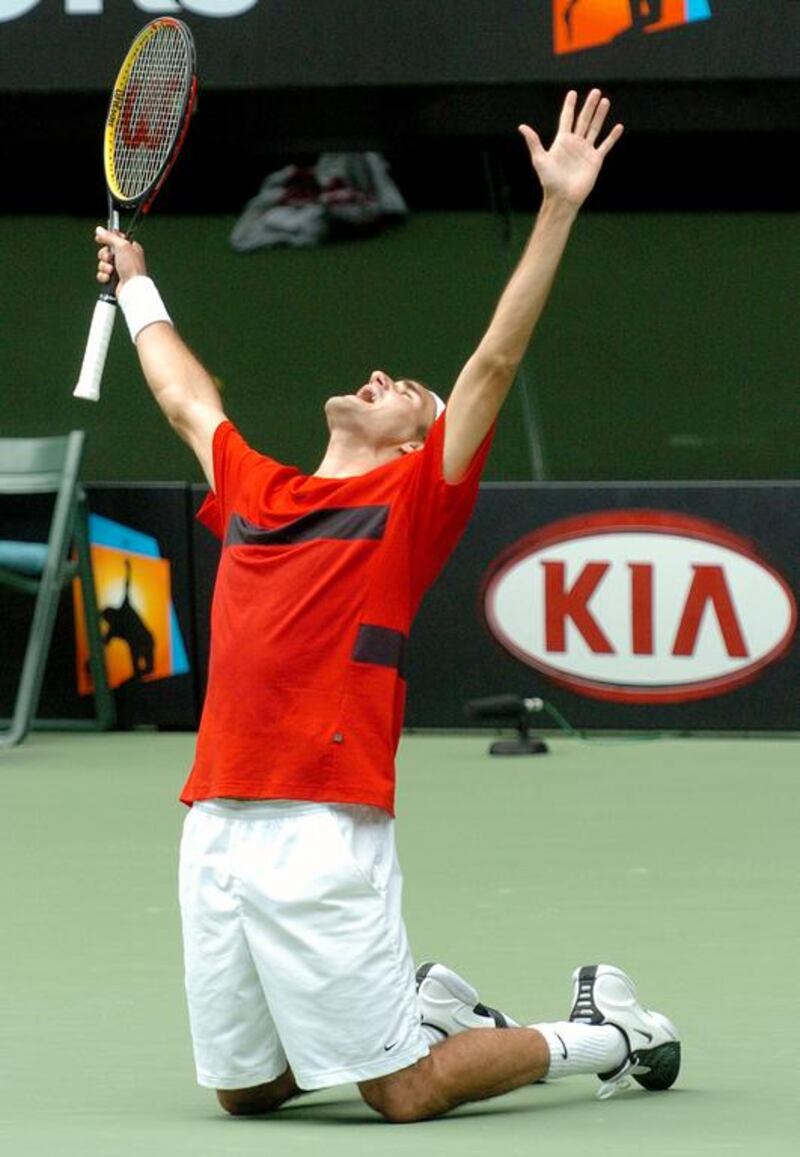On Sunday, with Switzerland playing hosts Serbia for a place in the quarter-finals of the Davis Cup, Roger Federer must not have had much time to celebrate one of the most memorable dates of his career.
The Swiss, officially, became the world No 1 for the first time on February 2, 2004, just a day after beating Marat Safin in the final of the Australian Open.
It was his second grand slam title.
Given his wobbles in recent times, many of his fans might have missed the occasion.
But the ATP did not forget.
Dishing out Federer’s impressive statistics as No 1 over the past decade, the ATP website took its readers down memory lane to January 30 of that year, when a long-haired Federer, 22, defeated his chief rival for the top ranking, Juan Carlos Ferrero, in the semis to confirm his rise.
“The abiding memory is of Roger Federer dropping to his knees and raising his arms in celebration,” the ATP wrote.
“I wanted to enjoy this moment,” Federer said later that night. “You only get to be No 1 once.”
Once? He was at the top of the rankings for 237 consecutive weeks from that date until Rafael Nadal replaced him on August 18, 2008.
In those four-and-a-half years, Federer was victorious at 10 of the 18 grand slams and runner-up at four.
He also won 13 Masters events and three year-ending ATP Championships.
Federer wrested back the No 1 position from Nadal on July 6, 2009, spending another 48 weeks and was back at the peak on July 9, 2012, for 17 weeks, breaking Pete Sampras’s record of 286 weeks at the top during that third stint.
Overall, Federer has held the No 1 position for 302 of the 523 weeks since February 2, 2004, compiling a win-loss record of 421-53 as the world No 1. That gives him a winning percentage of 88.8, which is better than Nadal’s 86.1 (161-26) and Novak Djokovic’s 85.6 (125-21). His winning percentage at grand slams as No 1 is an even better: 91.8 (135-12).
Federer, who is ranked No 8 now, will look back at those statistics fondly, knowing he probably has little chance of owning the top position again. But he is not short of ambitions.
“I have still got some major goals, because I certainly haven’t forgotten how to play tennis,” he said before the Australian Open. “I really feel like I’m on the way back. Who knows? Maybe I’ll play my best in March or April. That’s my feeling.”
During his run to the semis at Melbourne, Federer did that, beating two top-10s, Jo-Wilfried Tsonga and Andy Murray, along the way.
In the first nine months of 2013, when he was struggling with a back problem, the Swiss had just one win over a top-10 player.
Now, Federer’s legion of fans will be hoping that March-April prediction comes true. Those living in Dubai will be hoping that peak comes a few weeks sooner, in time for the Dubai Duty Free tournament that begins February 24.
arizvi@thenational.ae
Follow us on twitter at @SprtNationalUAE





